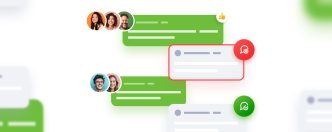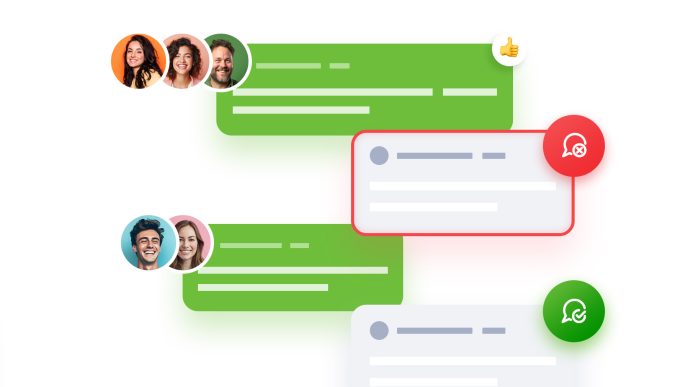The Q&A session in a webinar can be one of the best ways to connect with your audience. However, it can also be one of the moments that webinar hosts fear the most. This is probably the only part of the webinar presentation that you can’t 100% plan for. Probably one of the biggest concerns when addressing the webinar’s audience questions is what do I do if I can’t answer a question?
Although it’s not possible to know beforehand exactly what questions your audience will ask, with some planning and forethought, you can try to predict the kind of questions they may ask. The first step in making sure that you can address all the audience’s questions is to do through preparation before your webinar and make sure that you know your product well. This will give you enough material to answer most questions that come up.
This will also strengthen how your audience views you as an authority on the subject. When you can answer their question with authority and confidence, it will also install confidence in them for your product.
However, you should never worry about not being able to answer a question that a member of the audience comes up with.
Table of Contents
How to Address Audience Questions in Your Webinar
In this guide, you will learn how to tackle questions in your webinar that are difficult to answer and what to do if an attendee is being difficult. To do that, the types of questions are broken down into different situations.
Situation 1: A Valid Question That You Don’t Know The Answer To
This is probably the most common of the following situations that you have to deal with in a webinar. If an attendee asks a question that you donít know the answer to, the first mistake is to try and bluff your way through it. This is will probably harm your credibility more than admitting that you don’t know the answer.
However, there are tactful ways that you can deal with the situation without saying, “Sorry, I don’t know” and moving on.
The first thing you should do is flatter the questioner. So, say something like, “that is a great question that not many people have asked.” You could then offer to speak about the question in more detail after the webinar has finished. You could also say that requires a more in-depth answer than time allows and you will follow up with an answer via email after the webinar. In this case, it would be good to emphasize that you want to provide the most accurate and comprehensive information possible, therefore a follow up is a more effective option.
Another way of tackling a question that you donít know the answer to is just to admit that it is not something that you have thought of before and that you appreciate the person raising the question. You can then offer to do research and publish the answer in a blog, a follow-up email, or make it the topic of a future webinar.
Situation 2: The questioner starts asking about the superiority of a competitor’s product
Even in these situations, you should flatter the questioner by thanking him for a question, and saying that they are glad they’ve asked it.
If you have enough knowledge on the other product in question, you could tactfully explain the differences in products and highlight the benefits of your product. Try to avoid putting down your competitorís product because this could damage your credibility. You could even acknowledge some aspects of that product that you know some people like or find easy to use.
If you don’t know much about the product in question, you should just say so. You could say that you are not familiar with the product and if the questioner wants to talk more about it, you would be more than happy to do so after the webinar.
Situation 3: An Attendee Asks A Stupid Question
There could be a temptation to get frustrated at someone coming up with an unrelated or stupid question. However, don’t fall into the trap of showing this.
If the question was about something that you already covered in the webinar, you could mention to the person that they will find the answer to the question in the handout that will be sent in the follow-up email. Never say, “If you were listening before, you would have heard the answer to your question.”
If the question is completely unrelated, you could just tactfully mention to him that your webinar is dealing with the topic of and that you would be happy to discuss later his question.
Other Tips to Address the Webinar’s Audience Questions
Most of the time Q&A sessions go without any problems and you are able to address all the questions that your audience has.
Here are a few extra tips to make sure that your Q&A session is a success:
- Use a moderator to filter out duplicate questions and prioritize the most important ones.
- Invite the audience to use the chat function to send in questions at any time.
- Predict standard questions and preempt them with comments like, “many of you will probably already be thinking about it so I’d like to say that…”
- Use a few shorter Q&A session throughout the webinar rather than leave them all to the end.








